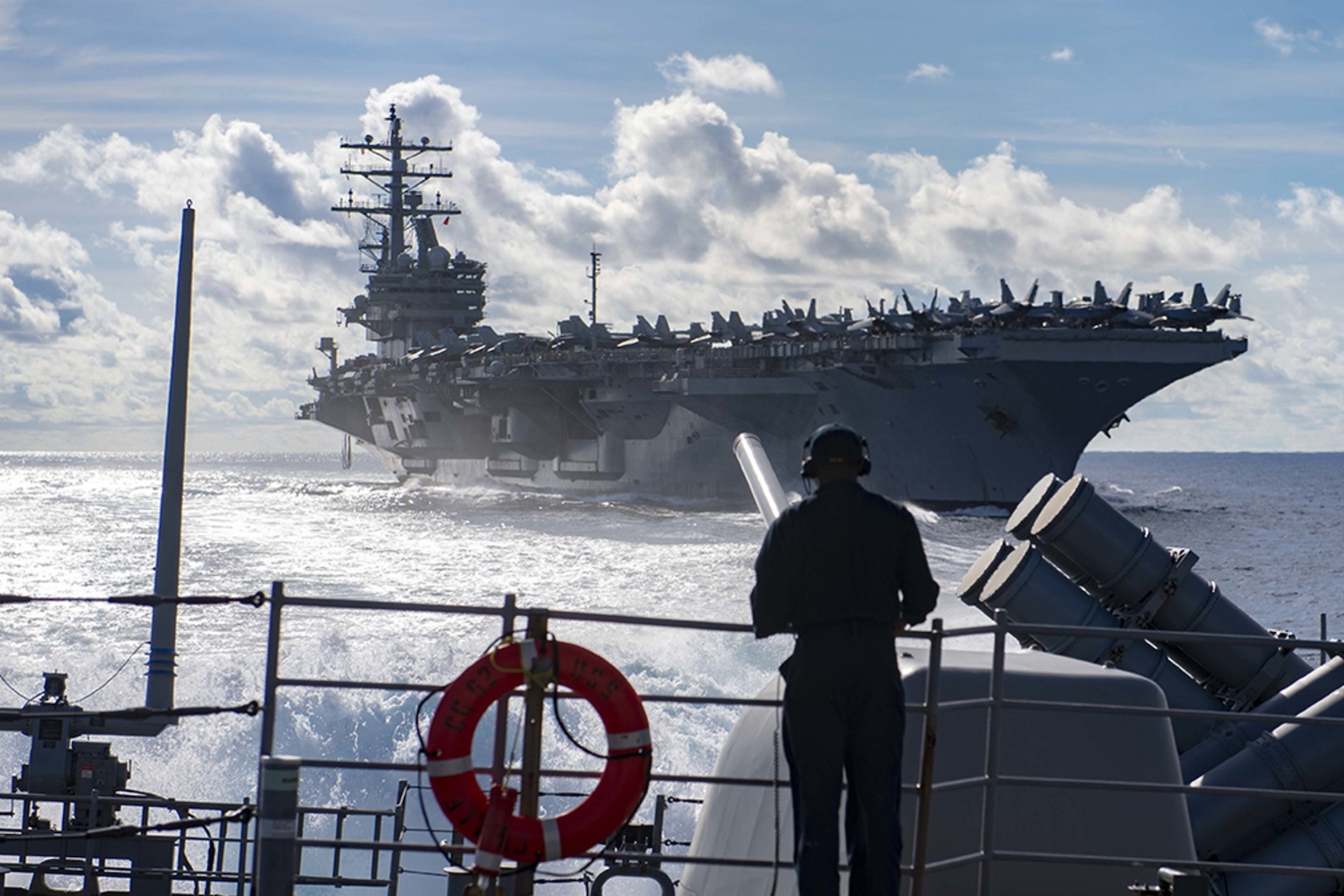
How Supercarriers are Limiting America’s Naval Capacity
The United States is the only country to field supercarriers in its navy. It also fields far more carriers than other countries with a total of 11 supercarriers in service at any given time. These assets have a unit cost of over $13 billion dollars to build, and maintenance and staffing costs are high. This is a steep price for a type of naval vessel that is increasingly vulnerable in a world characterized by renewed great power competition. Instead of building 10 new Gerald R. Ford-class supercarriers, the U.S. Navy would benefit from building only five. The money saved could then be reinvested into other capabilities, particularly America-class Amphibious Assault Ships, configured into light carriers.
There are currently two Gerald R. Ford-class carriers, two under construction, and one ordered. The U.S. Navy should not order the remaining five that are planned. The Ford-class carriers carry 75 aircraft and roughly 4,500 personnel, compared to roughly 25 aircraft and between one and three thousand personnel for the America-class. Having five supercarriers, complemented by 24 or so America-class ships, is a more efficient use of resources, is better suited to an environment of great power competition, and offers improved operational flexibility.
The first benefit of redistributing naval resources is cost savings. The America-class has a unit cost of around $3.5 billion dollars. This means that for every planned Ford-class that is not built, three America-class ships can be built, with $2.5 billion dollars left over. So far, 11 of these ships are already planned. The America-class still possesses the ability to carry and launch as many as 25 AV-8B Harrier IIs or a similar number of F-35 Lightning IIs, as well MV-22B Ospreys and a variety of other helicopters. Usually, the America-class will come equipped with a large well deck for deploying up to 1,800 Marines for land-based operations, though this comes at the expense of aircraft. Instead, when formatted for maximum airpower, the America-class carries nearly the same number of aircraft as the Russian carrier Admiral Kuznetsov. Overall, exchanging one Ford-class for three America-class ships does not reduce U.S. naval airpower: It distributes that power over multiple carriers.
This dispersion of aircraft means the America-class ships are better suited to an era of great power competition. Supercarriers are a big target, and the loss of even one significantly impacts American naval power and can dramatically alter the balance of U.S. forces in a region compared to an adversary. This vulnerability was not a problem when America fought wars against adversaries without navies or long-range missile systems. Now, many of America’s rivals possess navies of their own, as well as significant air power and missile capabilities that can be used against ships. For example, the Chinese have anti-ship ballistic missiles with effective ranges of around 1,500 kilometers; more than enough to strike a carrier. Supercarriers are simply too valuable to risk losing, and therefore have a limited role in a hypothetical conflict with a powerful state.
Third, America-class ships offer more operational flexibility. By splitting America’s naval air power between supercarriers and a larger number of amphibious assault ships configured as light carriers, the U.S. Navy will be able to keep more total carriers at sea. This allows the U.S. to respond dynamically to near-peer threats in multiple theaters without worry that one well-placed ASBM will wipe out 10% of the country’s naval air power. By maintaining supercarriers and light carriers, the U.S. will still be able to respond to major threats with bigger carriers but respond to smaller threats with proportionally smaller carriers. The overall result is a more efficient application of naval air power over a much larger geographic area, which is undoubtedly useful given the shifting geopolitical context.
This plan is not without tradeoffs. The America-class relies on aircraft with short takeoff and vertical landing (STOVL) capabilities, essentially limiting it to carrying Harriers and F-35Bs. This may require procuring additional F-35Bs to fully fill out the fleet of America-class ships. However, this is only a small tradeoff, since the cost of additional F-35Bs can be paid for out of the money saved by canceling five Ford-class carriers. Since the Navy plans to phase out the F/A-18 in favor of the F-35 anyway, simply spreading them out over more ships does not represent a significant shift in the current policy for aircraft procurement.
Some might also argue that halving the impressive supercarrier fleet would damage the Navy’s reputation of being second to none. However, given the fact that America-class ships are roughly the same size as the carriers of our adversaries, having a couple dozen of them at sea is plenty impressive.
Canceling the remaining five Ford-class carriers would free up $65 billion in naval procurement money. This money could then be spent on approximately 13 additional America-class amphibious assault ships configured as small carriers, and the Navy would still have about $19 billion dollars left over. The nature of conflict is changing. If the U.S. Navy is willing to change with it, America stands to remain a global superpower for decades to come.
